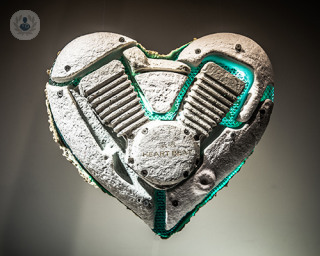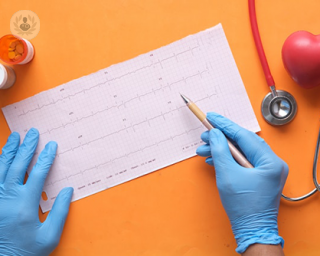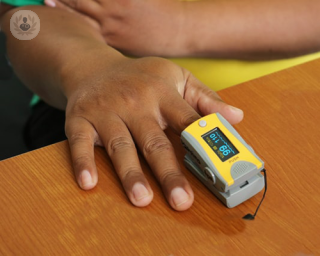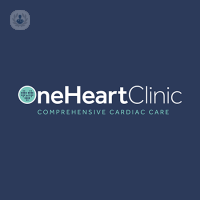Supraventricular tachycardia
Dr Saagar Mahida - Cardiology
Created on: 07-28-2015
Updated on: 06-07-2023
Edited by: Karolyn Judge
What is supraventricular tachycardia?
Supraventricular tachycardia (SVT) is a heart condition where the heart suddenly beats much faster than normal. This type of tachycardia originates from faulty electrical impulses in the upper part of the heart, rather than from the ventricles (the lower chambers of the heart). It is less dangerous than ventricular tachycardia. SVT then refers to any non-ventricular tachycardia, such as:
- Sinus tachycardia;
- Ectopic atrial tachycardia;
- Junctional tachycardia;
- Atrial fibrillation;
- Atrial flutter;
- Atrioventricular nodal reentrant tachycardia (AVNRT);
- Paroxysmal supraventricular tachycardia (PSVT).
However, the term 'supraventricular tachycardia' usually refers to AVNRT or PSVT. Supraventricular tachycardia can affect individuals who don’t have any other heart disease.
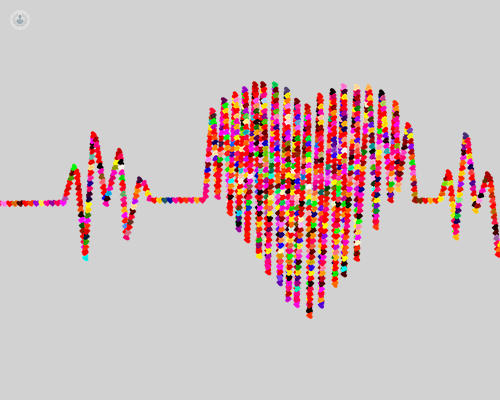
Is supraventricular tachycardia dangerous?
For healthy people, SVT is usually a non-life-threatening condition. They usually won’t need any treatment, as the episodes will come on and go on their own.
What are the symptoms of supraventricular tachycardia?
During an SVT episode, you may experience the following symptoms:
- Palpitations;
- Shortness of breath (dyspnoea);
- Dizziness;
- Fatigue;
- Temporary loss of consciousness;
- Chest pain;
- A tingling sensation and other types of paraesthesia;
- Rapid breathing (polypnea).
This type of tachycardia usually causes a regular, accelerated heartbeat which changes suddenly, going from 75 to more than 200 bpm. The episodes can last from a few minutes to 48 hours. Medical treatment may be necessary to make them stop.
How is supraventricular tachycardia diagnosed?
If you happen to have an episode during an examination, the cardiologist will check the patient’s heartbeat and then order some other tests, such as an electrocardiogram (ECG), which may require the patient to wear a Holter monitor for 24 hours.
What causes supraventricular tachycardia?
Supraventricular tachycardia is mainly caused by a malfunctioning of the electrical signals between the ventricles and the atria. The atria accelerate, causing a faster heartbeat. When the heartbeats are too close to one another, they are less efficient: the amount of blood pumped around the body is less than what is needed. This ends up lowering your blood pressure.
How is supraventricular tachycardia treated?
There are several options for treating supraventricular tachycardia:
- Vagal manoeuvre: these aim at activating the vagus nerve, which slows down the heart. They are most effective when performed at the beginning of an episode. It is best to do vagal manoeuvres under medical supervision. If you suffer from frequent tachycardia episodes, your doctor may teach you how to do some of them on your own, including taking a deep breath, shutting your mouth tight, holding your nose tightly and blowing out as hard as you can; or putting your face in ice-cold water for a few seconds. Another vagal manoeuvre is the carotid sinus massage, which should only be performed by a doctor.
- Electrical cardioversion: a defibrillator delivers tiny electrical shocks to the chest, in order to restore a normal heartbeat. This may be used if vagal manoeuvres don’t work.
- Radiofrequency ablation: the cardiac tissue and cardiac channels which are contributing to supraventricular tachycardia are destroyed by radiofrequency. It may be the best option for people who suffer from frequent episodes.
- Cryoablation: the same principal as radiofrequency ablation, but here an extremely low temperature is used to destroy the tissues. The process is done in two steps. In the first step, the tissues are brought to -10°C. If everything goes as it should, then the second step is to further lower the temperature to -73°C, wherein the tissue is permanently dead.
Medications may also be prescribed when vagal manoeuvres don't seem to be working or in case of frequent tachycardia episodes.
Which doctor should I talk to about supraventricular tachycardia?
If you’re having frequent supraventricular tachycardia episodes, you should see a cardiologist.

